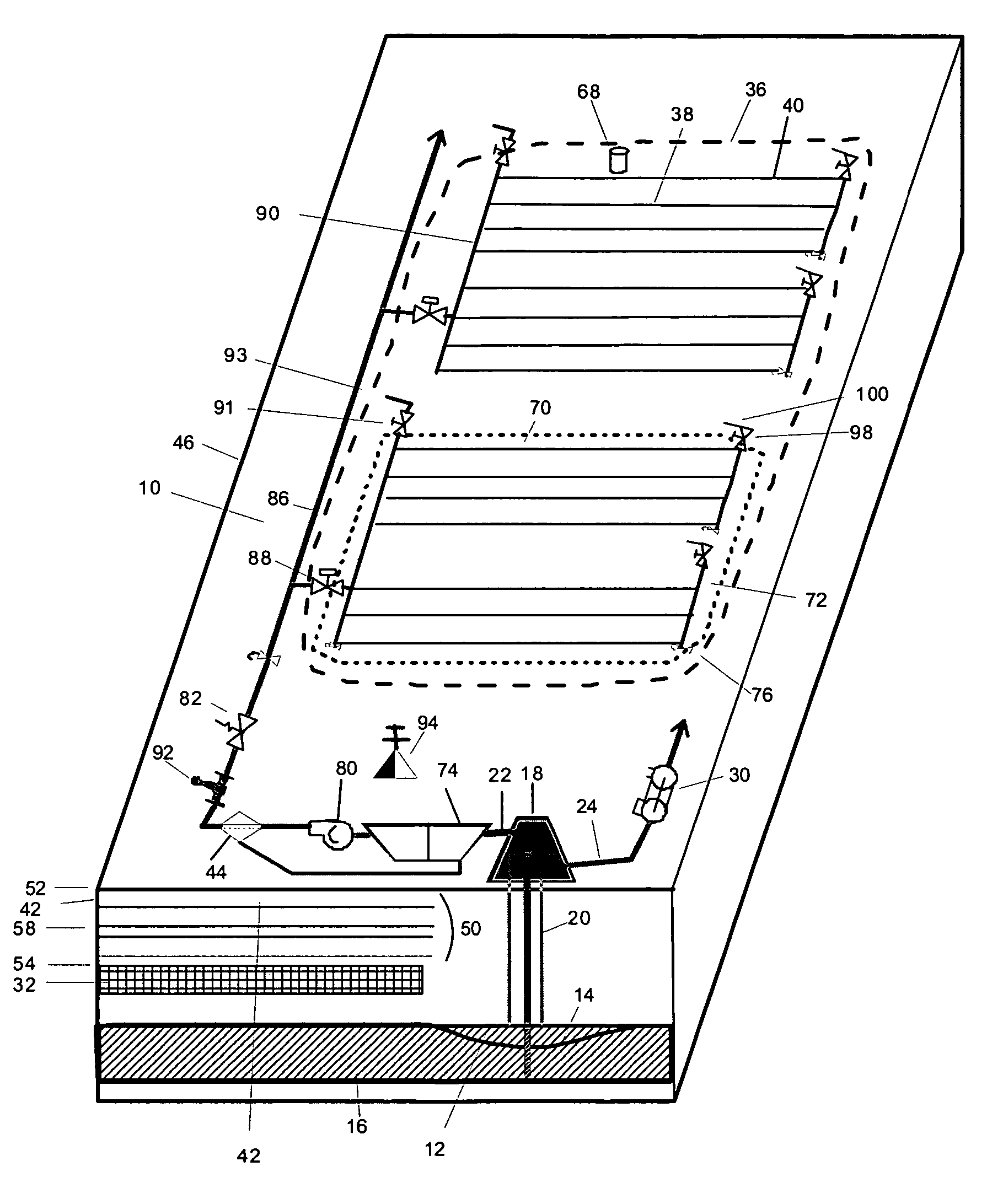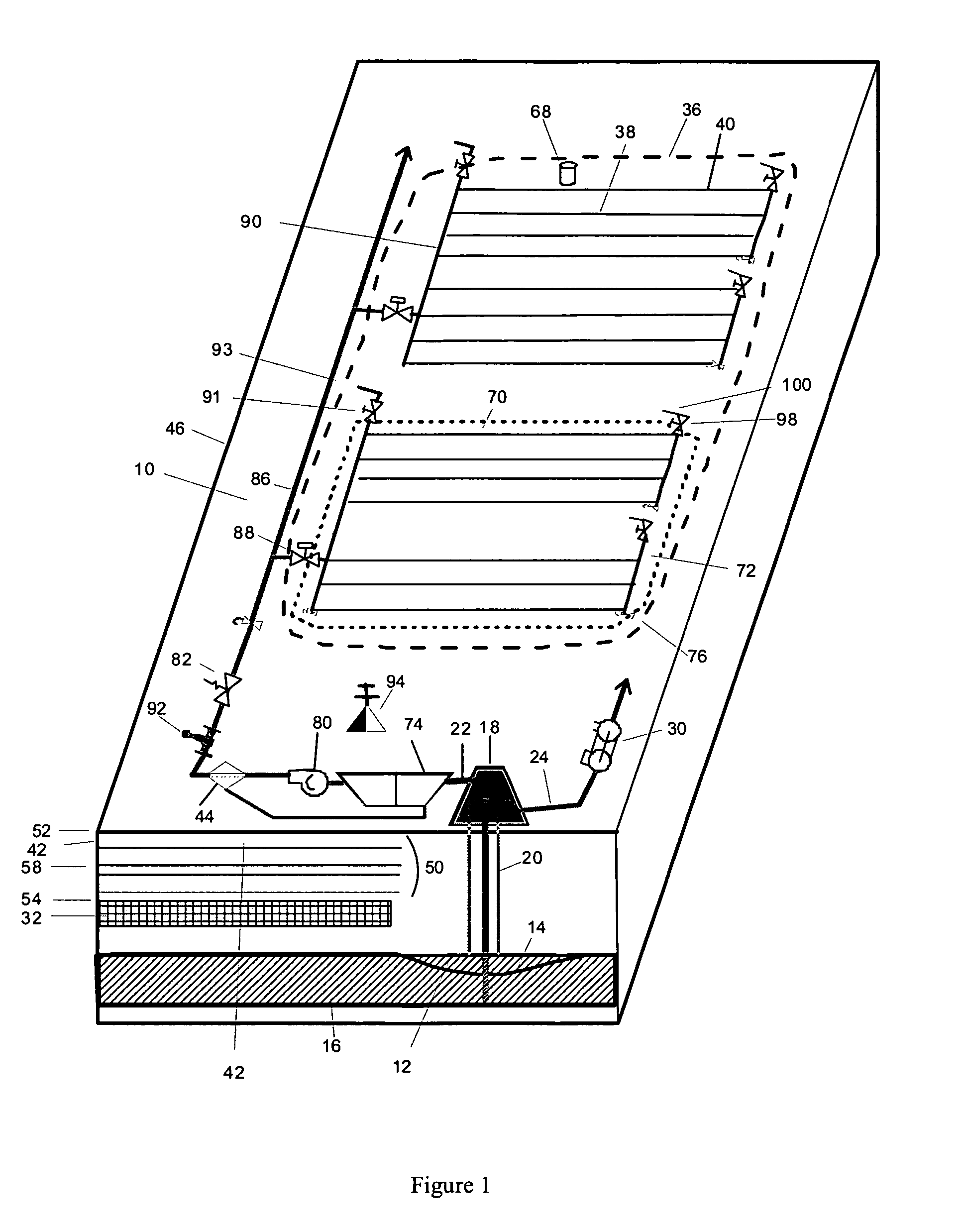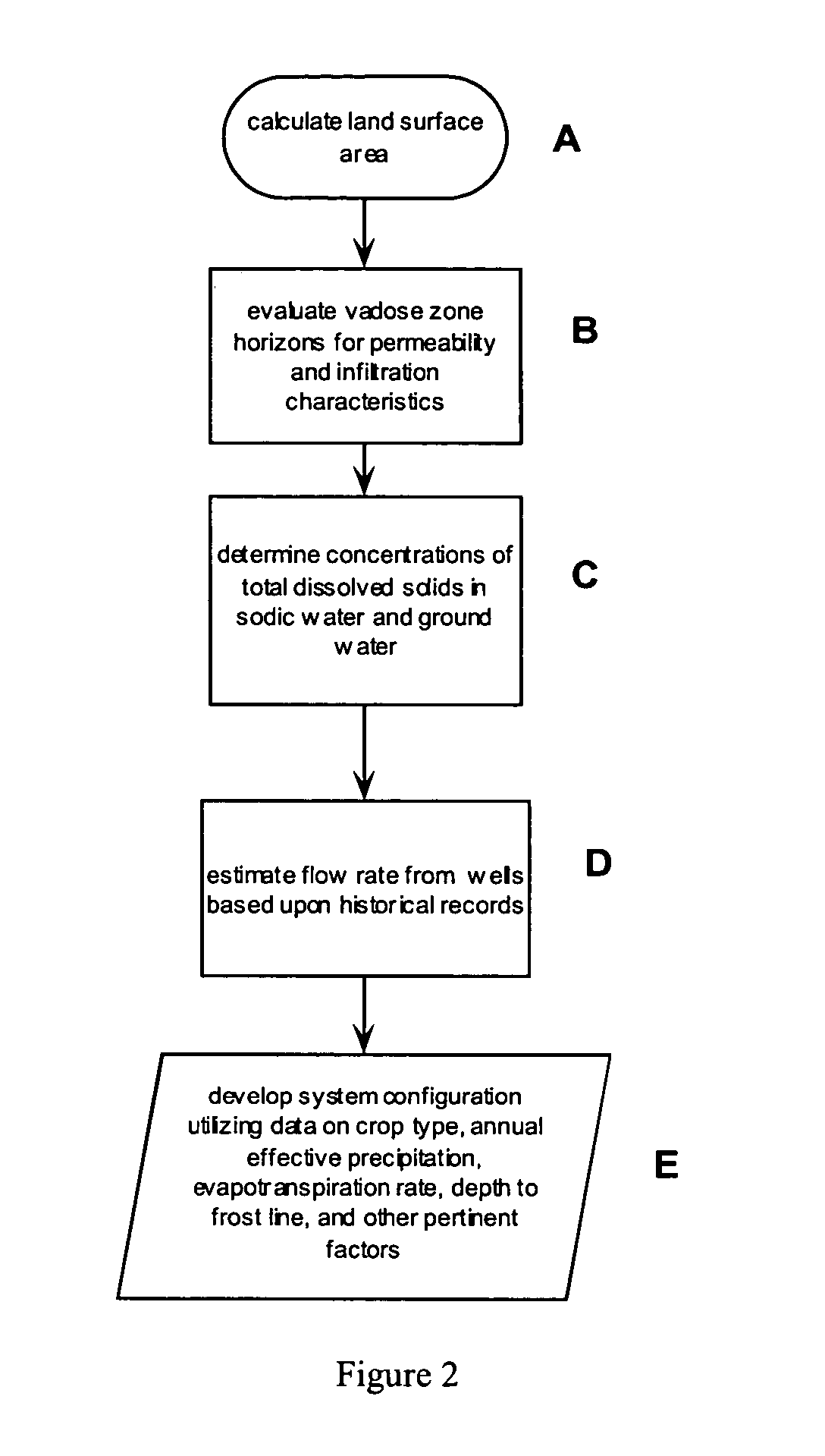System and method for dispersing of coal bed sodic water
a technology of coal bed sodic water and system, applied in water cleaning, chemistry apparatus and processes, agriculture, etc., can solve the problems of low efficiency, waste of valuable underground water reserves, removal of valuable land from production, etc., and achieve the effect of preventing suction development and easy drainag
- Summary
- Abstract
- Description
- Claims
- Application Information
AI Technical Summary
Benefits of technology
Problems solved by technology
Method used
Image
Examples
Embodiment Construction
[0030]FIG. 1 depicts a sodic water dispersal system 10 and the various components to implement the system 10. The extraction of coal bed methane 12 involves pumping sodic water 14 from the seam 16 in order to reduce the water pressure that holds natural gas 12 in the seam. Coal bed methane 12 has very low solubility in water and readily separates as pressure decreases, allowing it to be piped out of the well 18 separately from the water 14. FIG. 1 depicts a typical coal bed well bore 20 and reveals that water moving from the coal seam 16 to the well bore 20 encourages gas migration toward the well bore 20.
[0031] Coal bed methane producers dewater the coal seam 16 to decrease the water pressure (or head of water) in the coal seam 16. As shown in FIG. 1, water 14 and methane 12 are extracted from the well through separate lines for water 22 and for gas 24. The methane is piped under pressure to a pumping station 30 which then moves the gas along a pipeline to a point of distribution....
PUM
| Property | Measurement | Unit |
|---|---|---|
| electrical conductivity | aaaaa | aaaaa |
| depths | aaaaa | aaaaa |
| land area | aaaaa | aaaaa |
Abstract
Description
Claims
Application Information
 Login to View More
Login to View More - R&D
- Intellectual Property
- Life Sciences
- Materials
- Tech Scout
- Unparalleled Data Quality
- Higher Quality Content
- 60% Fewer Hallucinations
Browse by: Latest US Patents, China's latest patents, Technical Efficacy Thesaurus, Application Domain, Technology Topic, Popular Technical Reports.
© 2025 PatSnap. All rights reserved.Legal|Privacy policy|Modern Slavery Act Transparency Statement|Sitemap|About US| Contact US: help@patsnap.com



